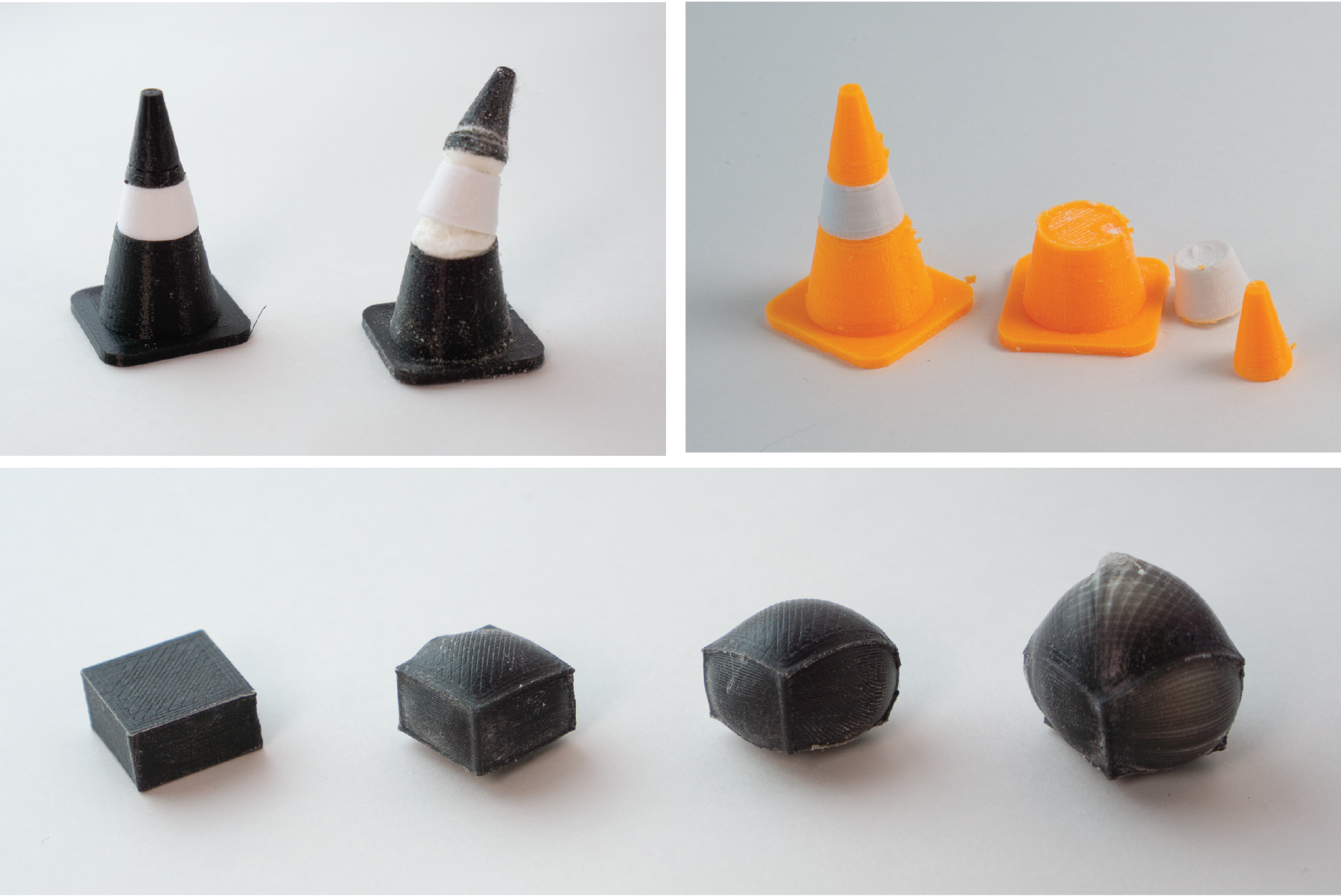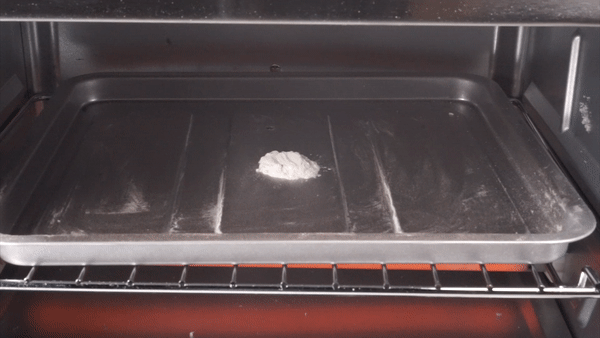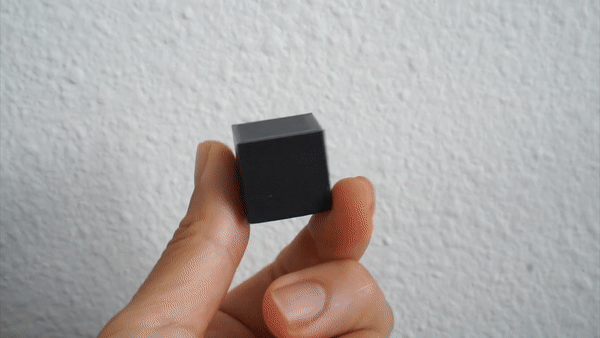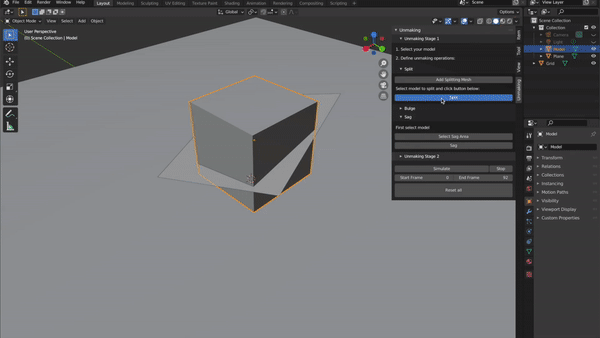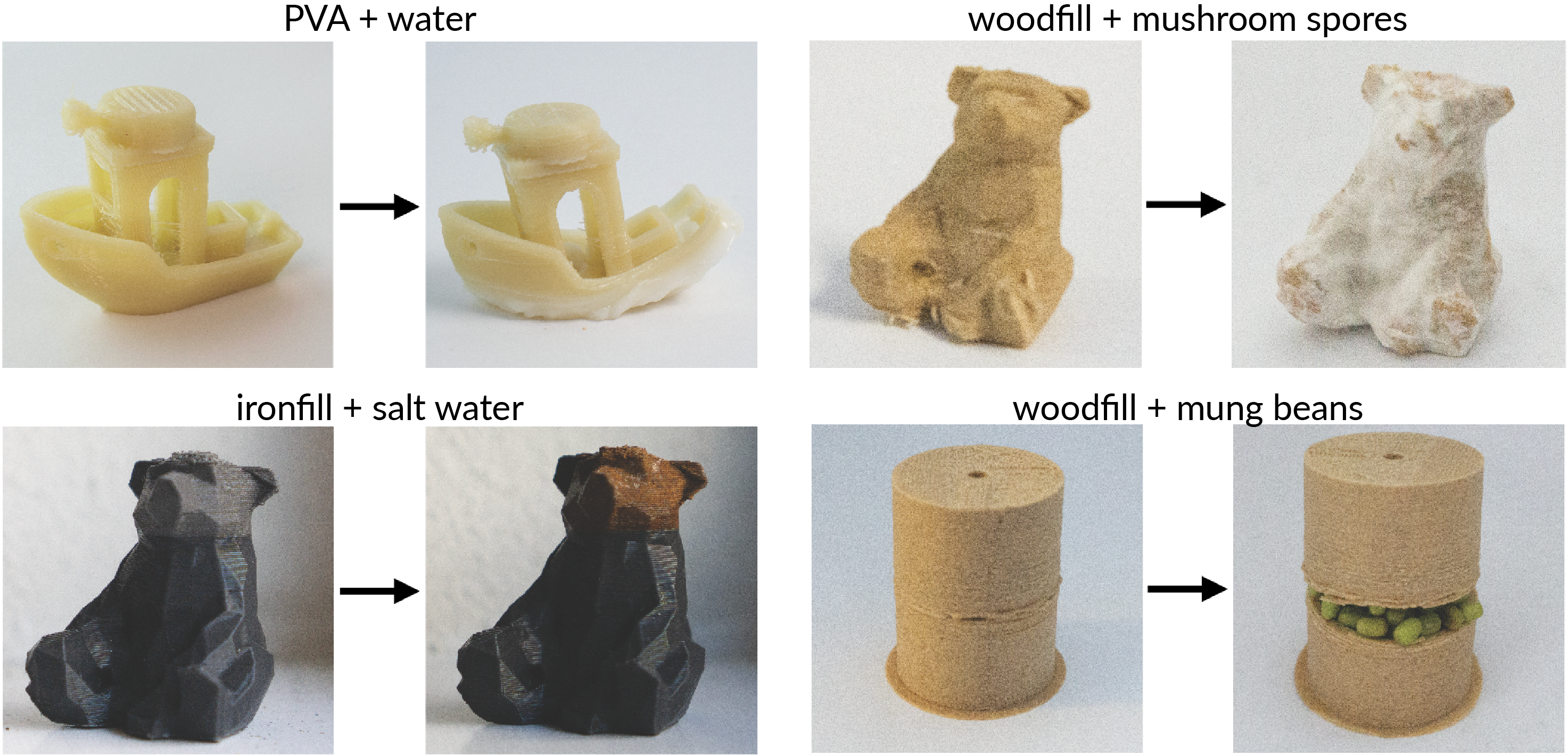The access and growing ubiquity of digital fabrication has ushered in a celebration of creativity and “making.” However, the focus is often on the resulting static artifact or the creative process and tools to design it. We envision a post-making process that extends past these final static objects – not just in their making but in their “unmaking.” By drawing from artistic movements such as Auto-Destructive Art, intentionally inverting well-established engineering principles of structurally sound designs, and safely misusing unstable materials, we demonstrate an important extension to making – unmaking. Unmaking is an emerging topic of interest in multiple sub-communities of HCI – including digital fabrication, critical design, and STS – that intersects with issues of sustainability, reusability, and more-than-human design. It is the central topic of a CHI2022 workshop, an upcoming CHI2024 workshop, and a TOCHI Special Issue.
My interest in unmaking in particular is in creating the materials combinations, fabrication workflows, and software tools so that designers may build in unmaking effects during the time of conception for their designs. In our CHI2021 paper, we provide designers with a new vocabulary of unmaking operations within standard 3D modeling tools.
Proposed vocabulary for unmaking operations.
We demonstrate how such designs can be realized using a novel multi-material 3D printing process. For our exemplar workflow, we implement splitting and bulging operations in PLA objects by selectively printing chambers of thermally expanding microspheres.
Thermally expanding microspheres expand to over 60x their original volume when exposed to heat.
Microspheres printed alongside PLA in an FDM 3D printer.
After printing, objects appear to be normal 3D-printed PLA objects, but upon exposure to heat, they split or bulge as the designer intended.
Example splitting and bulging in response to heat.
We also created a custom Blender plug-in that allows designers to visualize splitting and bulging effects when designing objects to print. The plugin automatically modifies the model to include chambers of microspheres, and a custom slicer generates the appropriate gcode for the 3D printer.
Unmaking software tool.
With other materials – such as those that dissolve in water, rust, or can be consumed by organic matter – and other fabrication strategies – such as intentionally printing weak layers or building in internal structures that allow two chemical reagents to combine when the object is handled in a certain way – many more unmaking effects are possible.
More unmaking effects with different materials and fabrication strategies.
publications
-
Unmaking & HCI: Techniques, Technologies, Materials, and Philosophies Beyond Making
Katherine W. Song, Samar Sabie, Steven Jackson, Kristina Lindström, Eric Paulos, Åsa Ståhl, and Ron Wakkary
ACM Trans. Comput.-Hum. Interact., Jan 2025
-
Unmaking@CHI: Concretizing the Material and Epistemological Practices of Unmaking in HCI
Samar Sabie, Katherine W. Song, Tapan Parikh, Steven J. Jackson, Eric Paulos, Kristina Lindström, Åsa Ståhl, Dina Sabie, Kristina Andersen, and Ron Wakkary
In CHI Conference on Human Factors in Computing Systems Extended Abstracts (Workshop), Jan 2022
Design is conventionally considered to be about making and creating new things. But what about the converse of that process – unmaking that which already exists? Researchers and designers have recently started to explore the concept of “unmaking” to actively think about important design issues like reuse, repair, and unintended socio-ecological impacts. They have also observed the importance of unmaking as a ubiquitous process in the world, and its relation to making in an ongoing dialectic that continually recreates our material and technological realms. Despite the increasing attention to unmaking, it remains largely under-investigated and under-theorized in HCI. The objectives of this workshop are therefore to (a) bring together a community of researchers and practitioners who are interested in exploring or showcasing the affordances of unmaking, (b) articulate the material and epistemological scopes of unmaking within HCI, and (c) reflect on frameworks, research approaches, and technical infrastructure for unmaking in HCI that can support its wider application in the field.
-
Sustainable Unmaking: Designing for Biodegradation, Decay, and Disassembly
Katherine W. Song, Fiona Bell, Himani Deshpande, Ilan Mandel, Tiffany Wun, Mirela Alistar, Leah Buechley, Wendy Ju, Jeeeun Kim, Eric Paulos, Samar Sabie, and Ron Wakkary
In CHI Conference on Human Factors in Computing Systems Extended Abstracts (Workshop), Jan 2024
Unmaking is a counterpart to making and creating new things that has emerged as a concept of interest in diverse parts of the HCI community. Unmaking has been posed as an ally to sustainability, encouraging designers to foreground issues relating to reuse, repair, obsolescence, degradation, and decay early in their design process. As a follow-up to the 2022 Unmaking@CHI workshop, this workshop will bring together researchers and practitioners interested in unmaking as it relates to sustainability and will focus primarily on exploring the role of unmaking in material practices, drawing upon the growing body of unmaking theory to explore future research opportunities for designing physical things with sustainable materials that are transient, degradable, and intentionally unmake-able. In addition to considering the pragmatics of what and how to unmake, we seek to articulate the relationships among unmaking and other related emerging themes and sustainable material practices – including biodegradation, designing with more-than-human agencies, reuse, and repair – and propose guidelines for designing for the unmaking of physical artifacts that are sustainable, equitable, and respectful of all entities involved.
-
Unmaking: Enabling and Celebrating the Creative Material of Failure, Destruction, Decay, and Deformation
Katherine W. Song and Eric Paulos
In Proceedings of the 2021 CHI Conference on Human Factors in Computing Systems, Jan 2021
The access and growing ubiquity of digital fabrication has ushered in a celebration of creativity and "making." However, the focus is often on the resulting static artifact or the creative process and tools to design it. We envision a post-making process that extends past these final static objects – not just in their making but in their “unmaking.” By drawing from artistic movements such as Auto-Destructive Art, intentionally inverting well-established engineering principles of structurally sound designs, and safely misusing unstable materials, we demonstrate an important extension to making – unmaking. In this paper, we provide designers with a new vocabulary of unmaking operations within standard 3D modeling tools. We demonstrate how such designs can be realized using a novel multi-material 3D printing process. Finally, we detail how unmaking allows designs to change over time, is an ally to sustainability and re-usability, and captures themes of "aura," emotionality, and personalization.
